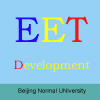-
The Use of Virtual Reality in K-12 Education
普通类 -
- 支持
- 批判
- 提问
- 解释
- 补充
- 删除
-
-
The Use of Virtual Reality in K-12 Education
IMAGINE OUR CHILDREN taking classes in a 3D learning environment like the holodeck on Star Trek, where they can sit in Albert Einstein's study, talking with him about quantum mechanics, or even go inside an electron to interact with quantum particles firsthand. Gradually this virtual reality is becoming an actual reality in the K12 world.-
VR Today

The Louvre's virtual tours are almost like being there.
Ever since techno-visionary Jaron Lanier coined the term in the early 80’s, Virtual Reality (VR) has captured the imagination. Defined as "a computer-generated 3-D experience in which a user can navigate around, interact with, and be immersed in another world in real time, or at the speed of life" (Briggs, 2002), the entertainment, computer gaming and defense industries are in the forefront of the research of this technology. However, much progress is being made in K12 education, too. In fact, VR is already here. For instance, a type of VR in common use is Apple's QuickTime, which allows 360-degree panoramic views. A beautiful example of QuickTime VR used for art education is the virtual tour of the Louve.
Here’s an example of VR material produced by education2000 to teach the math concept of line symmetry in grade school.
For the full lesson:Line Symmetry Lesson
Place the mouse cursor over the media. Hold down the mouse button and drag toward the left or right to rotate the image.-
VREAL is Pointing the Way

VREAL instructor aiding a deaf student.
In addition to Web-based learning, VR is also being used in the classroom, most notably the VREAL (Virtual Reality Education for Assisted Learning) program in Orange County Florida. This program was set-up to teach hearing-impaired students both life and math skills. In a classroom setting students are provided joysticks and high-resolution monitors. The children use these to learn how to navigate their hometown and ask people questions in simulated real life encounters. They’ve found this practice gives the students the confidence to face similar situations in real life. Many experts believe VREAL is pointing the way toward general use of VR in K12 classrooms. (Warlick, 2002)
-
A Glimpse into the Future

A scene from THE SKULL lesson (UCSD School of Medicine)
click to enlargeToday’s students experience VR in the form of video games, but in the future science classroom, they will manipulate chromosomes on a strand of DNA and view the result -- sans the moral and physical consequences. Students can already perform virtual dissections using "AnatomicVisualizeR©" produced by the UCSD School of Medicine.
Other Universities and research institutes in the U.S. and worldwide are conducting education related VR research for remedial Math instruction at the University of Central Florida (RAVEN) and Tele-Immersive Learning Environments at the University of Chicago’s Electronic Visualization Laboratory using CAVE, a walk-in 3D environment.
mpeg 192x144 (5.0Meg)
At the Virtual Reality Laboratory at the Swiss Federal Institute of Technology they are exploring modeling and animation of three-dimensional inhabited Virtual Worlds. One of their projects was Vpark, a Virtual Amusement Park, which included a virtual environment that allowed two distant users to share the same virtual environment for a lesson of aerobic dancing. They also developed an application that allows users to play checkers with a full scale virtual opponent - mpg demo. It's not a great leap of imagination to see this technology can be used to project virtual instructors into a classroom or even your family room.-
The Next Challenge
Researchers at Chicago University's EVL say the next goal is to integrate Virtual Reality with the incredible global networking potential of the Next Generation Internet (XHTML2 and XML). Dubbed "The Sematic Web" by Tim Berners Lee, the father of the Web, this new standard will be a smart network that will understand human languages and make computers virtually as easy to work with as other humans. (Electronic Visualization Laboratory, 2002)
-
More Information
Here’s a great page of links for the education use of Virtual Reality:
Edinfomatics Virtual Reality Links
VR research movies and demos assembled by UCSD's VR Laboratory
Index of Research Centers and Laboratories
Here’s another page that lists many of the current VR educational research projects:
http://www.hitl.washington.edu/kb/education.html-
Author
Don Dean
-
-
- 标签:
- vreal
- virtual
- education
- laboratory
- use
- lesson
- reality
- students
- classroom
- vr
- research
-
加入的知识群:



学习元评论 (0条)
聪明如你,不妨在这 发表你的看法与心得 ~